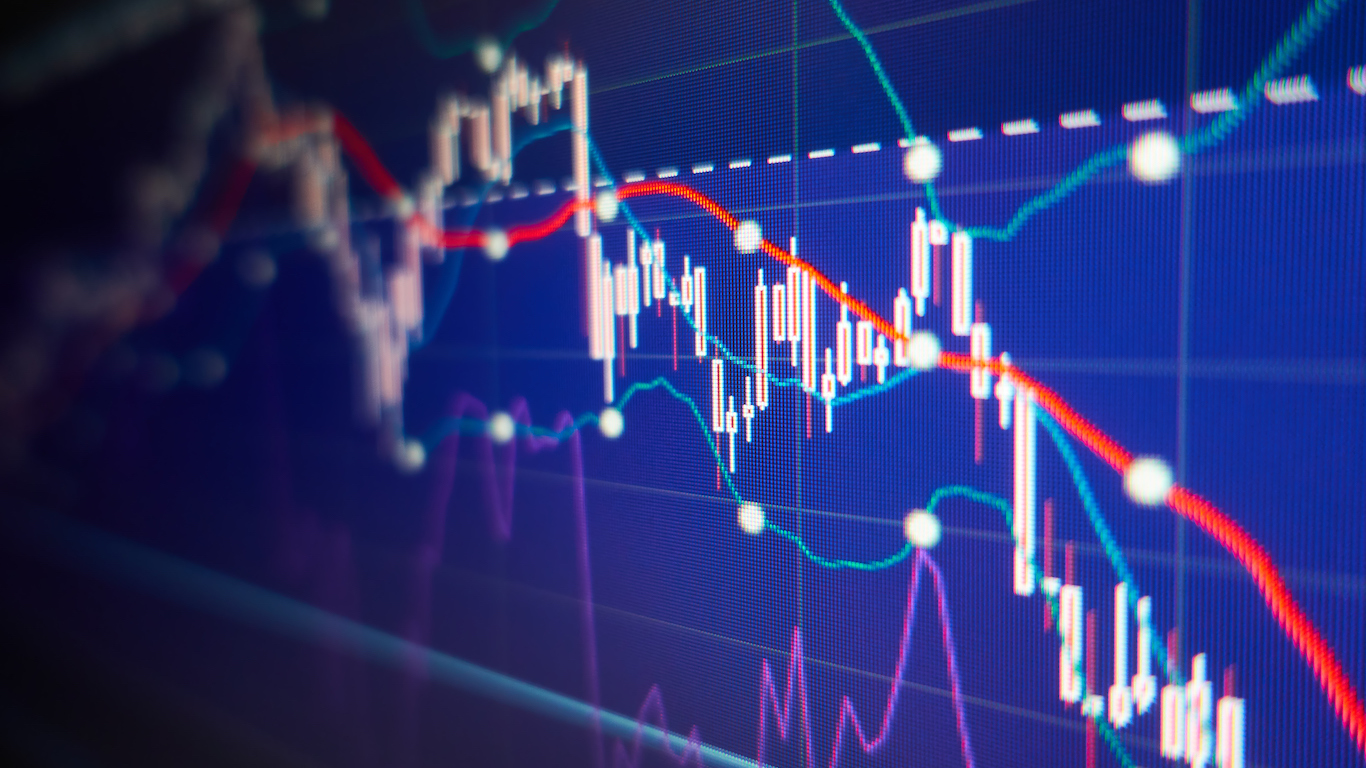
Markets have been halted for numerous reasons over the history of the stock market, and we could be due for another one really soon if markets continue in this direction. The ongoing conflict in the Ukraine is cause enough to have investors looking for cover, but the market fallout could be worse than we think.
In terms of a broad market perspective, this conflict already has precipitated the Dow Jones industrials, Nasdaq and S&P 500 hitting fresh lows for 2022, and the drop does not seem to be abating. In fact, the S&P 500 has just entered correction territory, following the Nasdaq’s lead in previous weeks. While this could be beneficial to some individual stocks or sectors, the larger perspective dictates market carnage.
One way to put a hold on this market carnage is to halt or close markets to prevent panic selling. There is currently a circuit breaker system employed at the New York Stock Exchange (NYSE) for just such an occasion. Essentially, this system acts as a trading curb to halt trading so that more accurate information can flow between market makers and traders to assess their positions and make more rational decisions.
This system was first implemented after Black Monday in 1987, which saw a drop of 22% on the day. As a result of this massive drop, the U.S. Securities and Exchange Commission (SEC) took it upon itself to mandate circuit breakers to prevent plunges like this in the future. The system was implemented in the NYSE in January 1988.
There are three circuit breaker levels that the NYSE sets each day according to the close of the previous day: 7% (Level 1), 13% (Level 2) and 20% (Level 3). Basically, the S&P 500 would have to drop in value past these thresholds to trigger a trading halt. The Level 1 and Level 2 declines result in a 15-minute trading halt, unless it occurs after 3:25 pm ET, when no trading halts apply. If a Level 3 is triggered, then trading is suspended for the remainder of the day.
Here are some notable trading halts over the course of the NYSE’s history:
July 31, 1914
World War I kicked off a few days prior to the halt, but the NYSE was halted for four months. This closure is attributable to foreign investment in the United States. Basically, foreign countries were looking to liquidate their investments abroad to add to their war chest, and in order to prevent a massive decline, markets were closed.
October 19, 1987
Black Monday, as we all call it, saw one of the largest single-day drops in the market. As a result, we saw the circuit breaker system implemented only a few months later.
September 11, 2001
The 9/11 attacks on the World Trade Center live in infamy for many Americans, not just from the sheer trauma of the day but in the massive financial losses that would follow. Markets remained closed until September 17.
December 1, 2008
The financial crisis of 2008 saw the NYSE halted for massive sell-offs, as subprime lending had created a horde of toxic assets and many consumers and a few financial institutions were left holding the bag.
May 6, 2010
The flash crash was a huge head fake for investors in which the Dow was up 300 points for the day and then dropped to a loss of 1,000 points within five minutes. While this did not trigger NYSE circuit breakers, the derivatives exchange (CME) hit its circuit breakers.
July 8, 2015
Trading on the NYSE was halted for roughly three-and-a-half hours by a technical issue. At the time, rumors were swirling that it was a cyberattack, but these speculations were dispelled. The story now is that it was just a technical glitch.
March 2020
Markets were halted multiple times over the course of this month as investors saw an unprecedented dive across the globe, all due to COVID-19. The losses over the course of this month were truly catastrophic, and circuit breakers were a good measure to prevent even more panic selling.
A quick look at the futures on Thursday morning (Feb 24), would show complete dismay among investors, and it is feasible that things could get worse from here. At last look, Nasdaq futures were down close to 3%, while Dow and S&P 500 futures were each down just over 2%. There was still a way down to 7%, but the markets hadn’t opened yet. Premarket trading is a way to understand investor sentiment going into the trading day, and it is generally limited, but when the bell rings expect more investors to flood the zone.
So where do we go from here? Prudent investors need to be on the lookout for industries and companies that can stand up to the downward pressure. In this case, some companies in the oil patch, gold and aerospace and defense stocks seem to be the first place to look. However, other opportunities should present themselves as valuations correct going forward.
Take Charge of Your Retirement: Find the Right Financial Advisor For You in Minutes (Sponsor)
Retirement planning doesn’t have to feel overwhelming. The key is finding professional guidance—and we’ve made it easier than ever for you to connect with the right financial advisor for your unique needs.
Here’s how it works:
1️ Answer a Few Simple Questions
Tell us a bit about your goals and preferences—it only takes a few minutes!
2️ Get Your Top Advisor Matches
This tool matches you with qualified advisors who specialize in helping people like you achieve financial success.
3️ Choose Your Best Fit
Review their profiles, schedule an introductory meeting, and select the advisor who feels right for you.
Why wait? Start building the retirement you’ve always dreamed of. Click here to get started today!
Thank you for reading! Have some feedback for us?
Contact the 24/7 Wall St. editorial team.

 24/7 Wall St.
24/7 Wall St.



